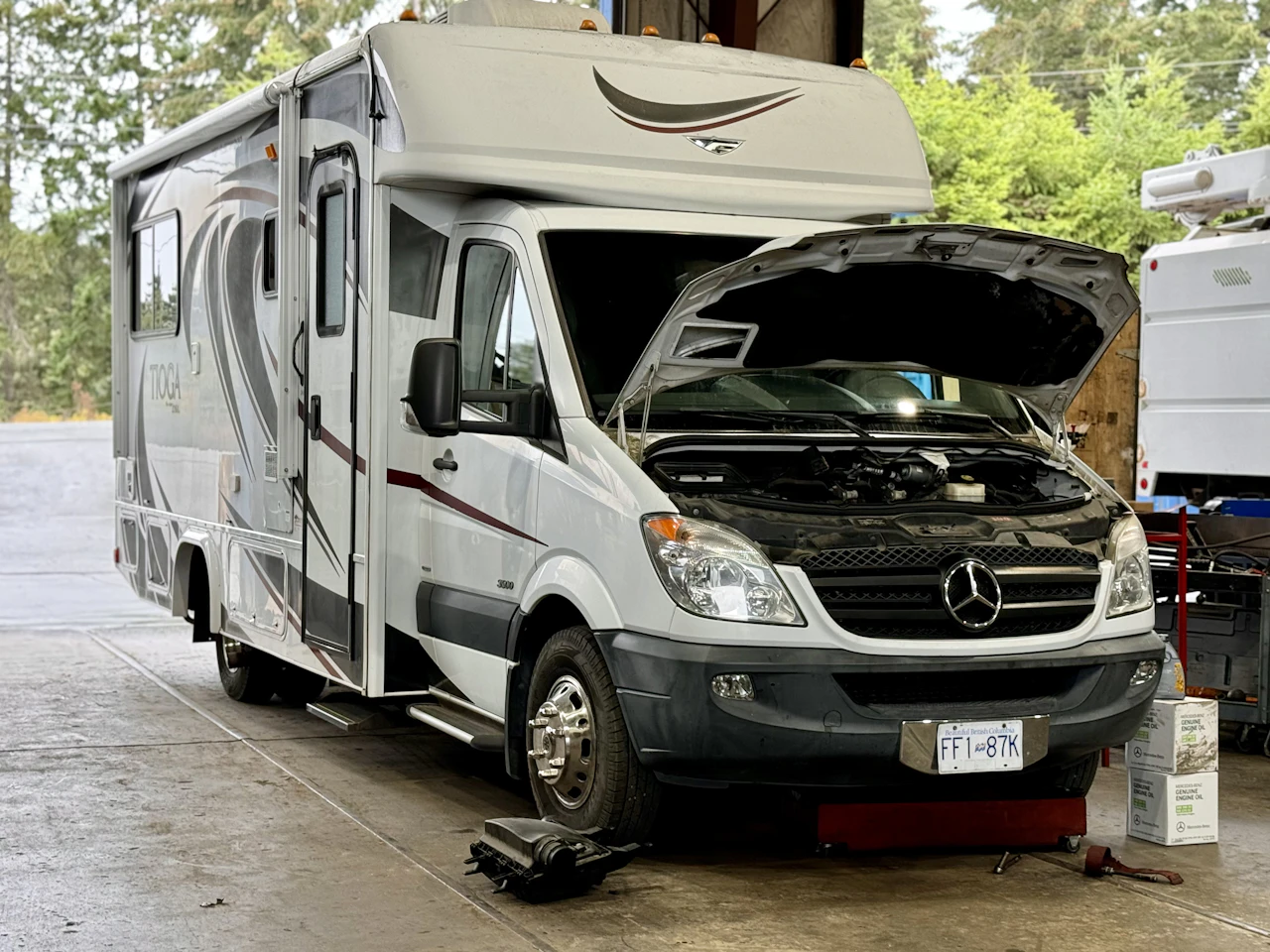When you're cruising down the Gulf Coast in your Class A motorhome or setting up camp under Clearwater's palms, the last thing you want is a generator failure. Your RV's generator is more than your central powerhouse. From powering your AC unit, fridge, and lights to keeping your batteries topped off, it plays a mission-critical role.
So, if you’re not regularly performing generator load tests, you’re gambling with your comfort—and your wallet. Let’s dig into why these tests are essential, how to perform them, and what red flags you should be looking out for.
What Is a Generator Load Test?
In plain English? A load test simulates the real-world demands your RV’s generator faces by placing an electrical load on it. This test ensures that it can produce and sustain proper voltage and frequency when called upon to power multiple systems.
It answers the million-dollar question: Can your generator handle the pressure, or is it limping toward failure?
Why Generator Load Testing Matters for RVs
1. Prevents Unexpected Failure
RV generators, like those built by Onan or Generac, can sit idle for long stretches. Without regular testing, internal corrosion, sticky valves, and carbon buildup become major threats. Load testing reveals weaknesses before they leave you sweating in the Florida sun.
2. Protects Expensive Appliances
Voltage drop or frequency instability can damage sensitive electronics, including your inverter, microwave, and HVAC system. A weak generator under load might “work”—but not safely.
3. Verifies Proper Combustion and Fuel Efficiency
Under load, a generator burns fuel differently than at idle. Load tests expose problems with fuel delivery, combustion, or cooling system inefficiencies that might not show up during light-duty use.
Signs You Might Need a Load Test (ASAP)
If you’re seeing any of the following signs, your generator system is overdue for a full diagnostic:
- Lights dim or flicker under load
- Generator shuts down randomly
- Odd smells or exhaust color changes
- Voltage readings outside 110–120V
- Inverter struggles to engage
How to Perform a Load Test Like a Pro
Step 1 – Warm Up the Generator
Start the generator and let it idle for 5–10 minutes. This stabilizes internal temperatures and ensures oil pressure and fuel flow are optimal.
Step 2 – Apply Load Incrementally
Start by turning on one heavy appliance, like your air conditioner. Gradually increase the load—fridge, microwave, and outlets—until you're simulating a typical usage day.
Use an amp clamp or multimeter to monitor real-time current draw.
Step 3 – Monitor Voltage and Frequency
Your output should hold steady at around 120V and 60Hz. Anything below 110V or above 130V indicates a potential voltage regulation issue.
Step 4 – Run Under Load for 30–60 Minutes
This is the stress test. You're watching for:
- RPM fluctuations
- Voltage dips
- Overheating
- Changes in exhaust color or smell
Step 5 – Let It Cool and Inspect
After the test, let your generator cool naturally. Then inspect:
- Oil level and condition
- Air filter
- Fuel lines and connections
- Exhaust system for signs of soot or leaks
Common Issues Revealed by Load Tests
Weak Voltage Regulator: A failing regulator can’t maintain consistent voltage under load. Left unchecked, it can fry your onboard electronics.
Dirty Carburetor or Injectors: In fuel-fed models, clogged jets or injectors will sputter or surge under load. Cleaning or replacing these components usually solves the issue.
Failing Brushes or Rotor: Low or fluctuating power output might be due to worn-out rotor brushes in the alternator portion of your generator.
Cooling System Failure: If your fan clutch or coolant lines are compromised, your generator will overheat and shut down mid-load. Don’t overlook this system—it’s vital for safe operation.
Maintenance Schedule for RV Generators
Here’s what seasoned RV owners and techs in Clearwater stick to:
- Perform a generator load test every 3 months
- Change oil and filter every 100 hours
- Replace the air filter every 200 hours
- Replace the fuel filter every 300 hours
- Replace spark plugs every 500 hours
Protect Your RV’s Generator Today
Skipping generator load tests is like ignoring your check engine light. Sure, everything might seem fine—until it’s not. With Clearwater’s summer heat and the unpredictable nature of the road, staying ahead of generator problems is crucial.
Take 60 minutes every few months to run a full load test. Trust us—your AC, appliances, and future self will thank you.
Need expert testing or repairs in the Clearwater area? Suncoast Fleet Services has the tools, techs, and know-how to keep your RV powered up and road-ready. For more information about RV maintenance, read our article about battery maintenance.

.svg)
.svg)
.svg)